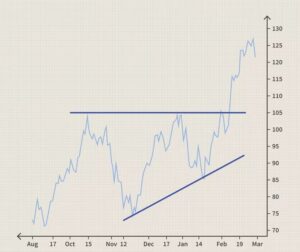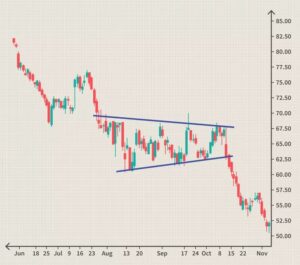Introduction
How to work on Support and Resistance Indicator? Friends, till now you have been taught that if the market comes near a support level then you should buy there and if it comes near the resistance level then you should sell there. But do you know how the market works on Support & Resistance i.e. How Stock Market React To Support and Resistance Indicator? So let me give you some secret information.
Friends, if you are new to the market, often you get trapped in the market due to support and resistance, due to which you incur huge losses, but I will tell you that the market does not behave as you are taught.
Because the market runs according to those who have big money, so when people like you and us make losses in the market, only then big players will be able to make profit from the market. So if you want to make profit from the market, then you have to work like those big players. Would think.
How to work on Support and Resistance Indicator?
Let us know how to work on Support and Resistance Indicator? You must have noticed that whenever you make a buying cut rate in the market, within a few minutes the market goes into selling. Similarly, when you make a selling trade in the market, the market rises and you suffer a loss. Let us know why this is so. It happens?
What Is a Breakout?
A breakout occurs when the stock price moves with greater volume outside of a designated support or resistance level. When the stock price breaks above resistance or below support, a breakout trader opens a long position or opens a short position.
Prices often trend in the direction of the breakout once the stock trades above the price barrier, with volatility tending to rise. Breakouts are a crucial part of trading strategies because they often signal the beginning of significant market trends, substantial price swings, and future spikes in volatility.

All kinds of market settings can experience breakouts. Channel breakouts and price pattern breakouts, such as triangles, flags, or head and shoulders patterns, usually result in the most dramatic price moves. During these periods, volatility diminishes and then usually expands once prices move outside of the designated ranges.
A wonderful approach is breakout trading, regardless of the timeframe. The principles apply regardless of whether you use intraday, daily, or weekly charts. This approach can be used for swing trading, day trading, or any other type of trading.
How Does the Market React To Support?
Friends, whenever you make a buy trade in the market at the support level, after a few minutes the market will come down rapidly. The reason for this is that there are many retailers like you who are buying considering it as support, and when the retailers make their positions. If they take it, then the operators work against them.
Due to which the stop loss of the retailers gets hit and the big players get profit. This process is called stop loss hunting and we have also written an article on how the operators work.
So whenever you see the price going up from the support level in the market, there is a high chance that the market will go down. If the market directly breaks any support then the retailers also create selling positions there, then you can time it. You can make a buying trade in the market.
How Does the Market React To Resistance?
Friends, whenever you make a buy trade in the market at the support level, after a few minutes the market will come down rapidly. The reason for this is that there are many retailers like you who are buying considering it as support, and when the retailers make their positions. If they take it, then the operators work against them.
Due to which the stop loss of the retailers gets hit and the big players get profit. This process is called stop loss hunting and we have also written an article on how the operators work.
So whenever you see the price going up from the support level in the market, there is a high chance that the market will go down. If the market directly breaks any support then the retailers also create selling positions there, then you can time it. You can make a buying trade in the market.
Finding a Good Candidate
The support and resistance levels of the underlying stock should be taken into account while trading breakouts. These levels gain validity and significance as the number of times a stock price touches them increases. However, the longer these levels of support and resistance remain in place, the more favourable the result will be when the stock price does eventually break out.

On the price chart, different price patterns will emerge when prices consolidate. Channels, triangles, and flags are useful formations to use when searching for stocks to trade. When looking for a suitable candidate to trade, it’s crucial to take into account elements like consistency and the amount of time a stock price has stuck to its support or resistance levels, in addition to patterns.
Entry Points
It’s time to plan the trade after locating a worthwhile instrument to trade. The entry point is the easiest thing to think about. When it comes to taking positions on a breakout, entry points are essentially clear-cut.
An investor will take a positive position after prices are poised to close above a resistance level. If an investor believes that prices will close below a level of support, they will adopt a bearish position.
Await confirmation in order to distinguish between a breakout and a fakeout. Fakeouts, for instance, happen when prices open above a level of support or resistance but ultimately move back inside the previous trading range by the end of the day. When an investor takes a fast decision without verifying it, there
is no assurance that prices will stay in new ranges. To find out if prices will hold the levels they’ve broken out of, many investors wait until the end of a trading session or seek for above-average activity as confirmation.
Planning Exits
Fixed exit points are a necessary component of a profitable trading strategy. There are three things to set up before opening a position when trading breakouts.
1. Where to Exit With a Profit
Plan your target pricing based on the stock’s previous performance to establish a fair goal. It’s simple to use recent price action to set a target when trading price patterns.
For instance, if a recent channel or price pattern has a range of six points, that quantity should be used as a price target once the stock breaks out (see below).

To generate a relative price goal, another method is to average the recent price fluctuations. This would be a feasible goal if the stock has made four point price movements on average over the last few price swings.
Here are some suggestions for establishing price objectives as the trade goal. Your objective for the trade need to be this. An investor has three options once the objective is met: they can raise a stop-loss order to lock in profits, exit the entire position, or leave a portion of it to let the remaining piece to run.
2. Where to Exit With a Loss
Understanding when a deal has failed is crucial. This is a fairly clear information provided by breakout trading. Old levels of resistance should become new levels of support after a breakout, and old levels of support should become new levels of resistance.
This is a crucial factor to take into account because it provides a methodical approach to identifying when a trade has failed and a simple way to figure out where to place your stop-loss order. Use the previous level of support or resistance as a line in the sand to end a losing trade once a position has been taken. Examine the PCZ chart below.

It’s critical to close a deal as soon as possible when it doesn’t work out. Never allow a loss to get too big. Should you be not careful, losses can accumulate.
3. Where to Set a Stop Order
Consider using the previous level of support or resistance that prices have broken in order to determine whether to exit a position at a loss. Protecting a position safely and limiting the trade’s negative risk can be achieved by securely placing a stop inside these boundaries.
Because prices frequently revisit price levels they have just broken out of, setting a stop higher than this will probably induce an early exit.
The first price consolidation, the breakout, the retest, and the price target met are all visible on the above chart. It’s a really mechanical process.
If the stop-loss order had been placed above the previous resistance level, prices would not have been allowed to retest these levels when determining where to place it. and the investor would have been stopped out prematurely. Setting the stop below this level allows prices to retest and catch the trade quickly if it fails.



Nice
Pingback: Intraday Trading: The Basics and How to Get Started - stockbazzar.com